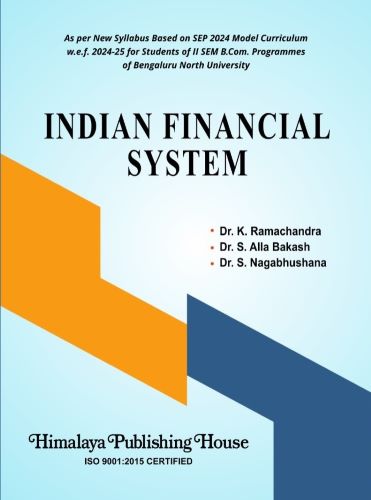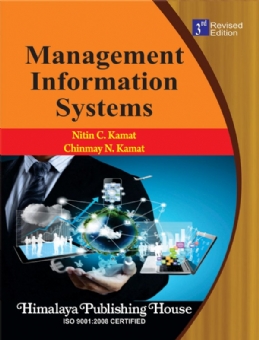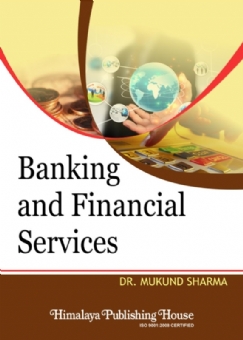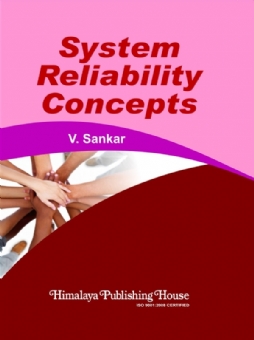The book will provide ample insights to the readers about the various concepts, theories, models, challenges, issues, opportunities, skill development and competency building in the dynamic field of Indian Financial System and subsequent amendments. This book provides insight about the complete Indian Financial System to the readers. This book gives the overall overview of financial system to the readers such as flow of funds in financial system and how the system contributes of economic development. It is also made to learn different financial system and their framework apart from understanding non-banking financial company (NBFC). This book is very useful for taking financial decisions at an individual level as well as company level.
The first chapter gives introduction to Financial System in India since 1951 covering the entire structure, components, instruments, Financial Sector Reforms in India. The second chapter dwells Financial Markets consisting of money market, capital markets, primary market and secondary markets. Chapter three discusses the different types of Financial Institutions like Commercial banks, Development Banks, NBFCs, RRBs and Mutual Funds. Chapter four deals with Financial Services, Merchanting Banking, Consumer Financing, Credit Rating Agencies and so on. Chapter five discusses Regulatory Institutions, RBI, its objectives and Functions, AMFI, SEBI.
The skill development component consists of understanding Virtual Trading Platforms, Non-Banking Financial Services provided by NBFCs, Preparation of a Chart Showing Components of Indian Financial System, understanding the role of Payment Banks and UPIs, Listing of Pre and Post Issue Management Services, recording of the Net Asset Values of Mutual Fund Companies and Writing the Rating Procedure followed by CRISIL are given in the Skill Development Activities Gallery.
Contents –
1. INTRODUCTION TO INDIAN FINANCIAL SYSTEM
Financial System: Introduction, Meaning & Components – Financial System and Economic Development – Financial Inter-mediation – An overview of Indian Financial System since 1951, Financial Sector Reforms since liberalisation 1991 – Concept of Financial Engineering.
2. FINANCIAL MARKETS
Financial Markets: Introduction, Meaning, Classifications & Importance Money Market: Introduction, Meaning & Definition, Features, Classifications, Organisation and instruments – Role of Central Bank in money market – Indian Money Market – an overview Capital Markets: Introduction, Meaning & Definition, Features, Classifications, Organisation and Instruments – Components of Capital market – Cash markets: Equity and Debt Depository – Primary Markets: IPO, FPO, Rights Issue, Private Placements & Open Offer – Secondary Markets: NSE, BSE, OTCEI – INDEX – Composition of NIFTY & SENSEX – Depositories – NSDL & CDSL – Role of Stock Exchanges in India – Commodity Markets: Introduction & Meaning.
3. FINANCIAL INSTITUTIONS
Commercial Banks: Introduction, Classifications, Management of Loans, Role in financing Commercial and Consumer – Recent developments like MUDRA Financing and other Social Security Schemes.
Development Banks: Introduction, Types, Functions, Growth, Structure & Working of Development Banks.
Non-Banking Financial Companies: Introduction, Meaning, Importance, Scope, Characteristics, Functions, Types, Regulations.
Regional Rural Banks: Introduction, Meaning, Objectives, Features, RBI Assistance, Evaluation, Major RRBs.
Insurance Organisations: Introduction, Meaning, Importance, Rationale, Types, Major Players, Important Regulations.
Mutual Funds: Introduction and their role in capital market development. Types of mutual fund schemes (Open Ended vs Close Ended, Equity, Debt, Hybrid schemes and ETFs.
4. FINANCIAL SERVICES
Financial Services: Overview of financial services industry. Merchant Banking – Pre and Post Issue Management, Underwriting, BRLM: Role of BRLM – Regulatory Framework relating to Merchant Banking in India – Leasing and Hire Purchase, Consumer and Housing Finance, Venture Capital Finance, Factoring Services: Types of Factoring – Credit Rating Agencies – CRISIL, ICRA, CARE, Moody’s, S&P – Financial Advisory and Portfolio Management Services.
5. REGULATORY INSTITUTIONS
RBI – Organisation, objectives, role and functions, monetary policy of RBI, the Impact of Credit Policy of RBI on Financial Markets, Inflation Index, WPI, CPI AMFI: Organisation, Objectives & Role SEBI: Role of SEBI and Investor Protection.
SKILLS DEVELOPMENT ACTIVITIES:
1. Visit Virtual Trading Platforms and Trade Virtually (Understand Real Time Market Data and Trading Functionalities).
2. List out the Non-Banking Financial Services provided by NBFCs.
3. Prepare a Chart Showing Components of Indian Financial System.
4. List out the role of Payment Banks and UPIs.
5. List out Pre and Post Issue Management Services.
6. Visit AMFI website and record the NET ASSET. VALUES of top ten Mutual Fund Companies.
7. Write the Rating Procedure followed by CRISIL.







